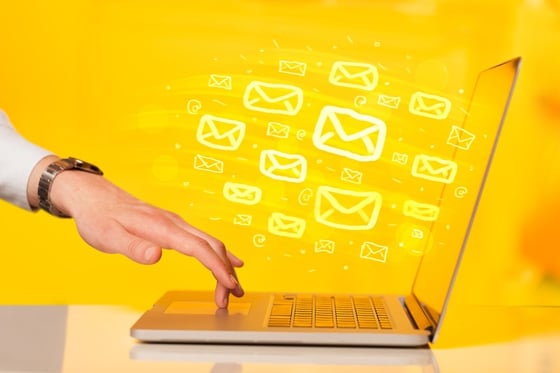


Why you should personalise your approach to email marketing automation




Email marketing automation is a godsend for time poor marketers, we won’t argue with that. However, don’t just sit back and let technology take over entirely while you holiday in the Caribbean. The average prospect’s inbox is full of marketing emails, and your collateral needs to break through the noise in order to get their attention.
A stunning 90% of marketers believe personalisation is the future. This was the claim of research conducted by Teradata back in 2014, so surely we’re now all up to our necks in personalised content and hyper-targeted communications?
Sadly, this isn’t the case across the board. Many companies still struggle, despite the huge potential rewards on offer. Time for us to make the case for a personalised email marketing automation strategy.
Email marketing automation needs a personal touch
Email marketing automation offers a way of sending promotional and transactional emails without having to actually press a “send” button, in a similar way to setting up direct debits to pay your rent or getting Amazon to reorder loo roll every other week.
Even better, email automation can be used to construct sophisticated workflows and personalised content. Customer preferences can be combined with back-end insights with things like email opens, website page views and other information to yield highly personalised experiences.
As well as improving the life of the email marketer, these automations can provide email recipients with engaging and relevant communications, and boost overall business performance as a result.
According to Demand Metric, 82% of customers feel more positive about a company after reading personalised content. That’s huge for brand image and reputation.
What’s more, 86% of customers say personalisation has an impact on their purchase, according to research by Infosys. This is a game changer for revenue and business growth!
Personalisation isn't just skin deep
Personalisation requires more than simply sticking a prospect’s name at the top of an email though. According to research by Starcom, while 69% of retailers are confident they are providing a personalised UX to consumers, only 26% of consumers actually agree. Awkward.
When you think about personalised content that makes its way into your inbox, what is it that stands out? If you’re signed up to notifications from a retailer or restaurant chain for instance, are you offered deals based on your chosen locations and preferred interests? Do you get gifted a special offer on your birthday?

Using HubSpot as your email marketing automation platform
Email marketing automation tools can make personalisation possible without you needing to spend lots of time and resource. You can say goodbye to mind-numbing manual data entry, painstakingly writing personalised communications and scheduling email sends. And just to add a cherry on top, you’ll cut the risk of human error too.
HubSpot is our email marketing automation software of choice, obviously. Not only do we manage our blog, website, social media and contacts through HubSpot, we also run a range of automated email communications to serve a number of purposes:
- Welcoming new leads
- Onboarding new clients
- Sharing content downloads
- Nurturing and re-engaging leads
- Announcing news and offerings
To make this magic happen, HubSpot offers the following functionalities…
1. Personalisation tokens
These can be added into email headings and copy to personalise your content with any property that exists on a contact record. For instance, you could include their first name in an email title, or namedrop their company. HubSpot populates your email with the relevant contact property, so you can address leads as individuals within a mass send.
2. Smart content
HubSpot can deliver personalised emails through the use of smart content. This functionality alters the content displayed within rich text, form, custom HTML or call to action modules depending on contact characteristics. The more you know about your leads, the more you can personalise content to match their interests.
3. Workflow triggers
Workflow triggers can help to personalise the flow of content, rather than the content itself. Every HubSpot workflow starts with a set ‘trigger’ which can be a contact property (like their lifecycle stage), an action (like a form submission) or even a date (useful for countdowns to events, product releases or contract renewals).
Some words of advice
It’s clear that we think email marketing automation is the best thing since sliced bread. However, can take a careful hand to set up more complex workflows. If you’re new to the game, here are a few pearls of wisdom from Marketing Land:
- Decide what lead data you need to collect for your personalisation efforts
- Content is still king, and good automation can’t outrun bad copy
- Don’t automate for the sake of automating. Test the waters and start small
- Set goals, monitor performance and analyse your strategy
- Be prepared to make continuous improvements
Any more questions? Get in touch to chat about email marketing automation tools with the experts.








